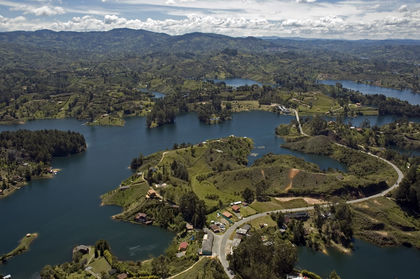Colombia - Climate

Colombia's climatic variations are determined by altitude, and seasons are periods of lesser or greater rainfall, with little or no temperature change. The country may be divided vertically into four regions. The hot country, or tierra caliente, is the tropical zone, reaching from sea level to roughly 1,100 m (3,500 ft), where the mean annual temperature is 24° C to 27° C (75–81° F ); at sea level, temperatures have a mean maximum of 38° C (100° F ) and a minimum of 18° C (64° F ). Between 1,100 m (3,500 ft) and 2,000 m (6,500 ft) is the temperate zone, or tierra templada, where the average year-round temperature is about 18° C (64° F ). Between 2,000 m (6,500 ft) and 3,000 m (10,000 ft) is the cold country, or tierra fría, with temperatures averaging a little over 13° C (55° F ). Above the 3,000-m (10,000-ft) level the temperature varies from 13° C to–17° C (55° F to 1° F ), according to altitude. The annual mean temperature at the capital, Bogotá (altitude 2,598 m/8,525 ft), is 14° C (57° F ). Rainfall is heaviest on the west coast and in the Andean area; rainy and dry seasons, or "winter" and "summer," generally alternate in three-month cycles, as in Bogotá, where precipitation occurs most heavily and consistently during the periods of April to June and October to December. Northern areas have only one long rainy season, from May through October. The annual average rainfall is 107 cm (42 in).
Comment about this article, ask questions, or add new information about this topic: